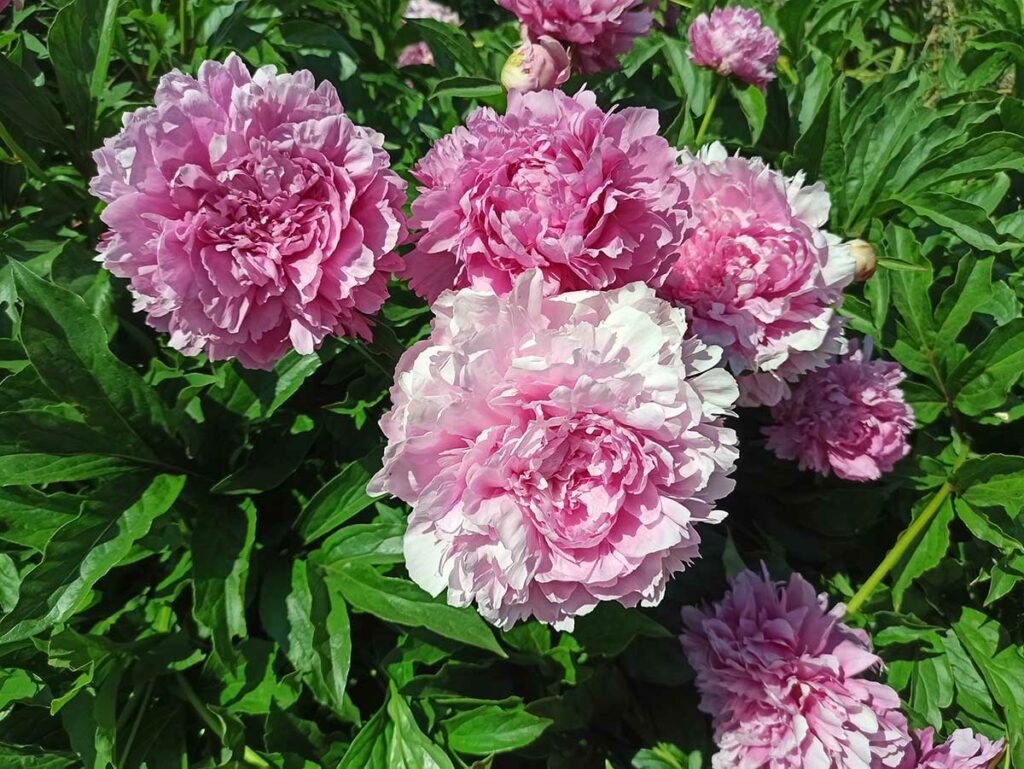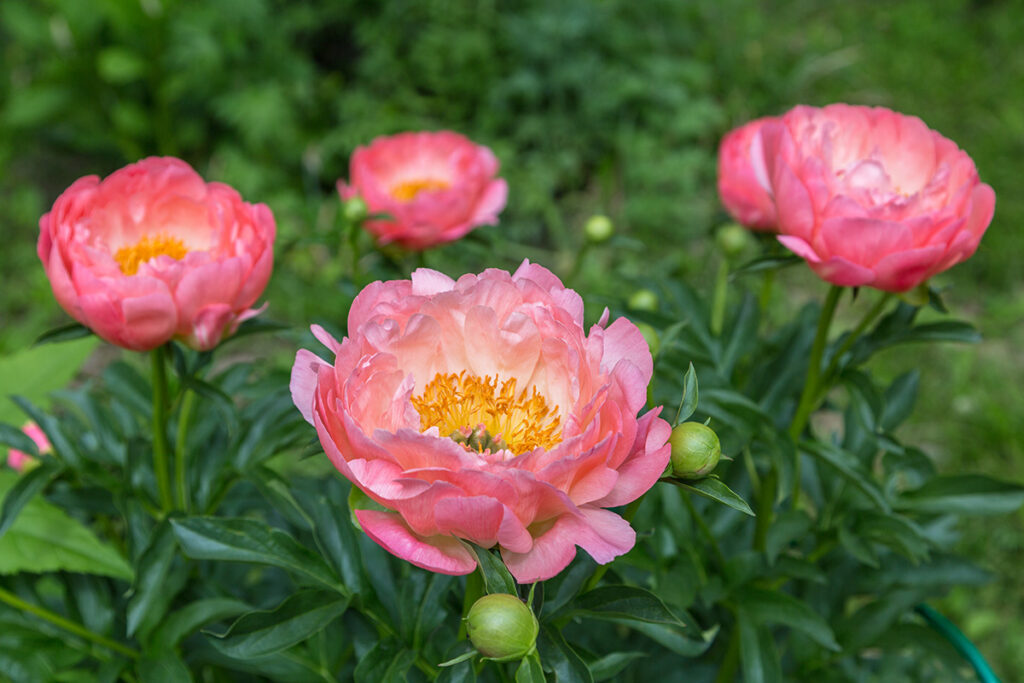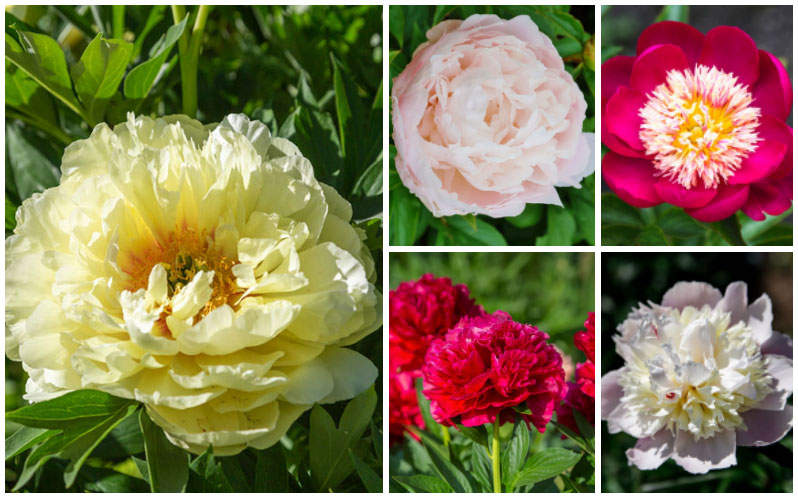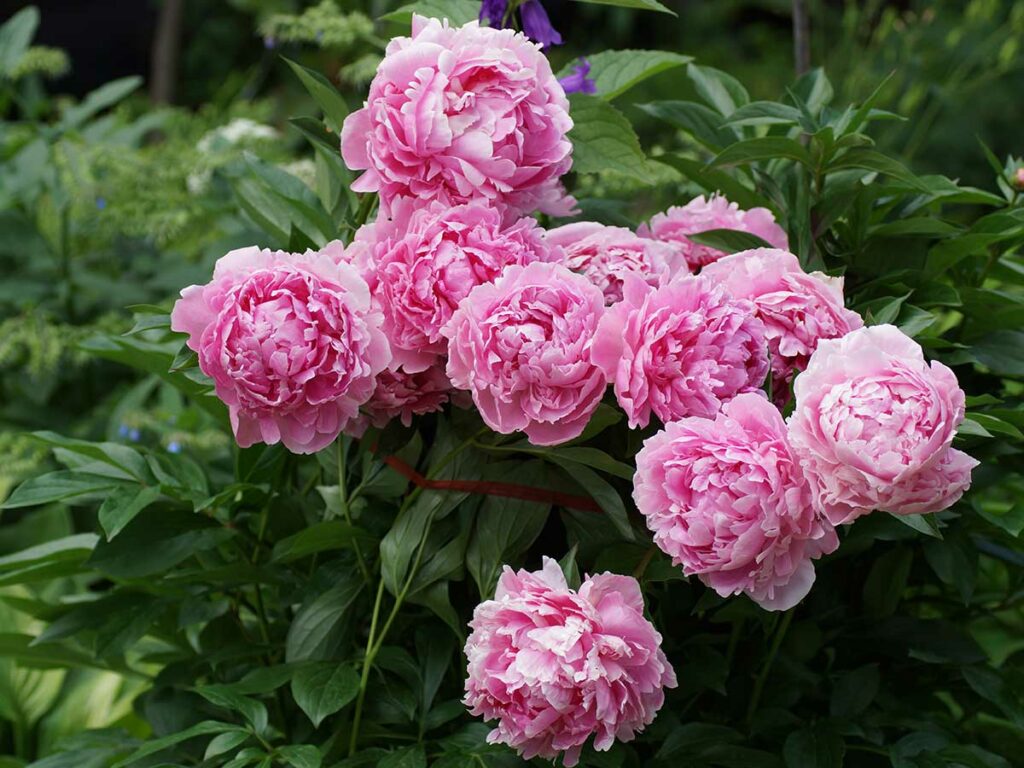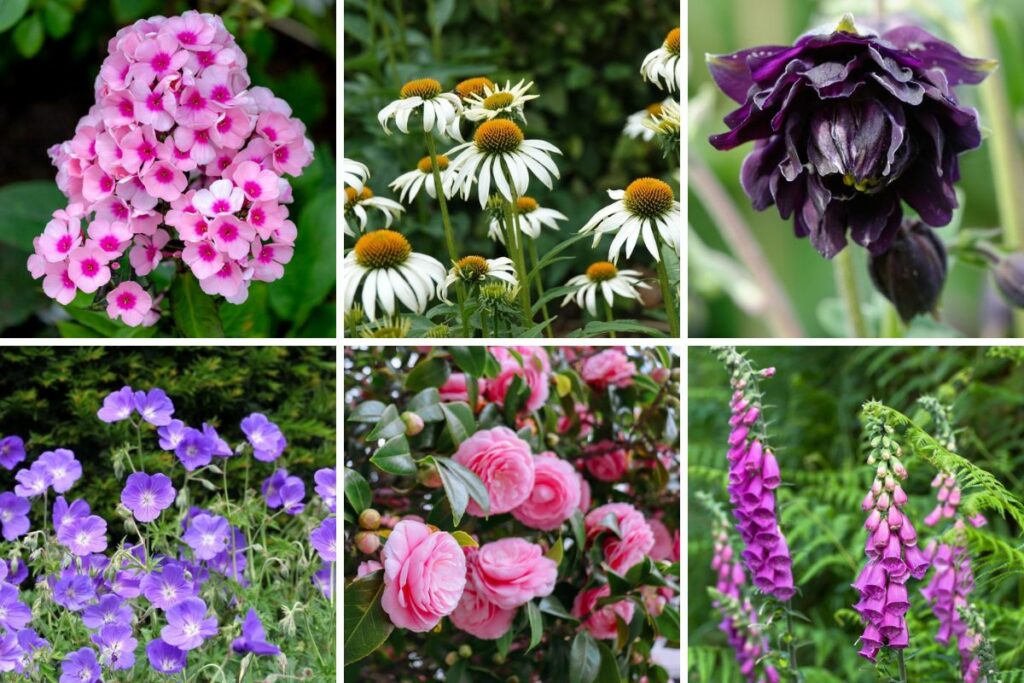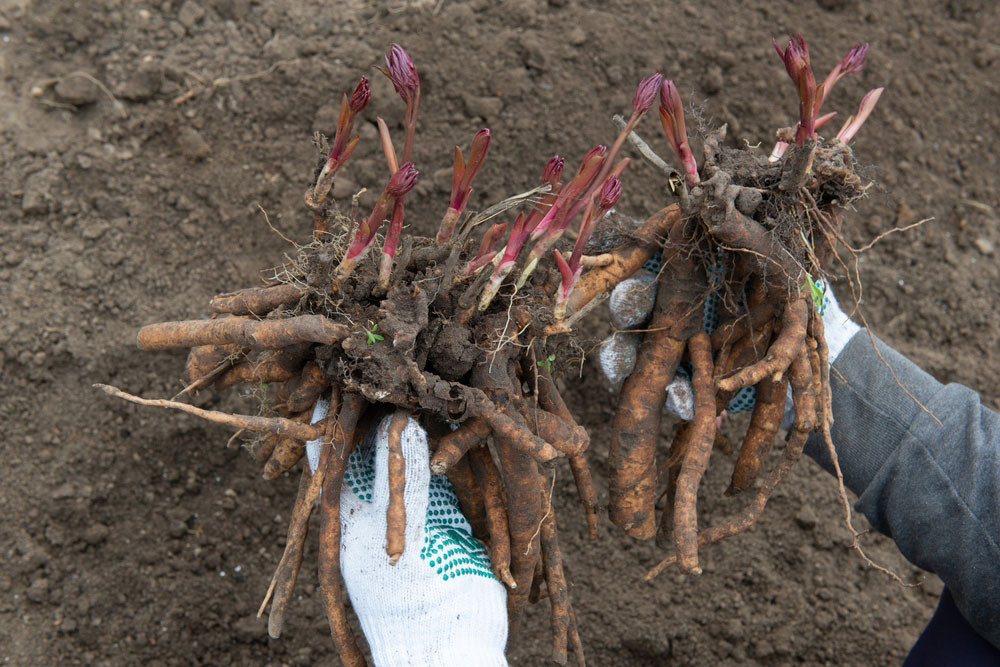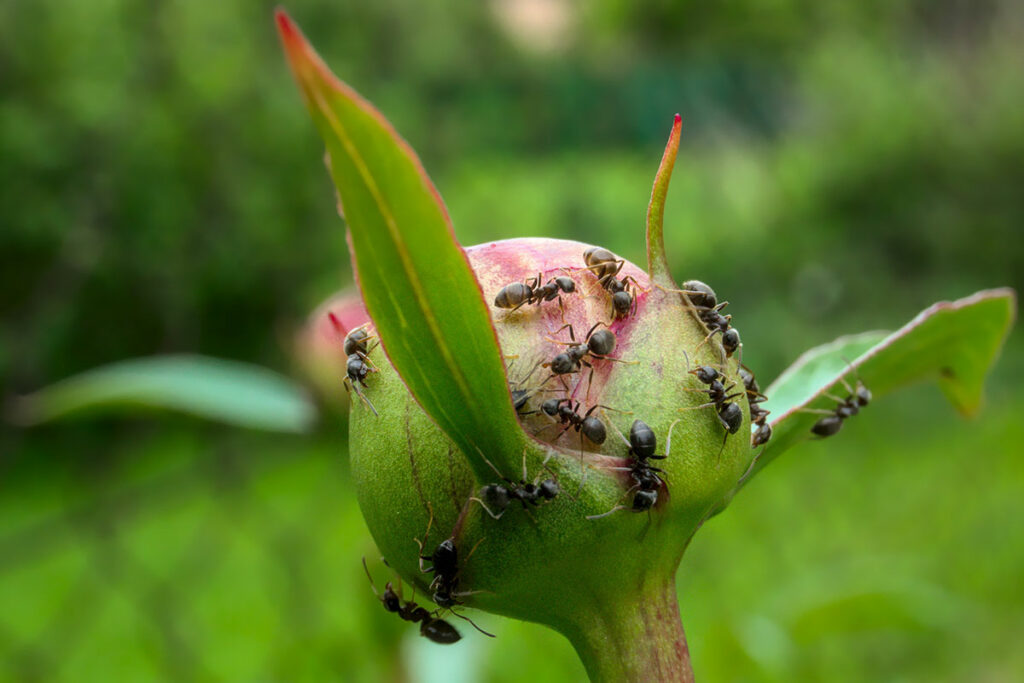
Ever marveled at the sight of a peony bloom, only to find a small army of ants marching around it? It’s not just you, and it’s not a coincidence. Peonies and ants share a fascinating relationship that’s as intriguing as it is beneficial.
Peonies, with their double petal blooms, are among the prettiest flowers you’ll come across. But their beauty isn’t their only allure. These flowers produce a small amount of nectar on their unopened buds, making them an irresistible early-season food source for ants.
But it’s not just a one-way street. The ants, while not necessary for the peony to bloom, play a crucial role in protecting the flower from other harmful insects.
So, next time you spot ants on a peony, remember, it’s not an invasion, it’s a match made in heaven.
The Symbiotic Relationship Between Peonies and Ants
In this section, we’ll delve deeper into the unique bond that links peonies and ants, a fact that often raises eyebrows in the gardening world.
Understanding the Attraction
Peonies, characteristically known for their large, fragrant flowers, secrete a sap rich in carbohydrates, especially when their buds are flowering. Though strange as it may seem, this sappy secretion serves as a magnet to ants, driving them to swarm over the blooming buds. This gives rise to the frequently observed congregation of ants around peony blossoms.
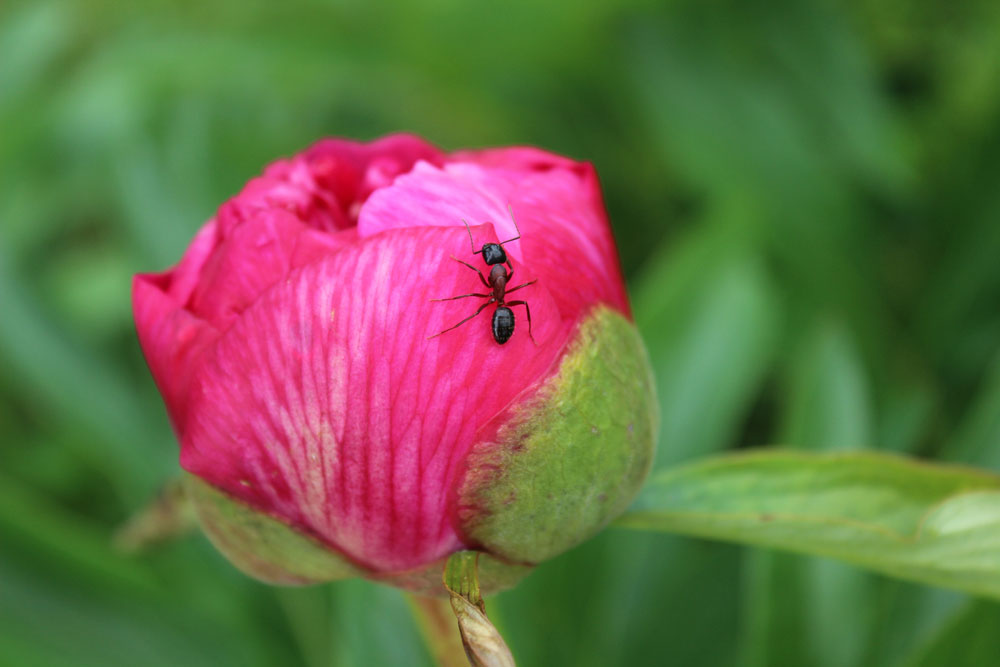
Benefits to Peonies
As these ants flock to the peony buds in pursuit of the sweet sap, their mere presence deters other potentially harmful insects, inadvertently offering an organic form of pest control. The ant’s natural behavior of protecting its food source shields the peony blossom, preserving the flower parts from potential damage. This interaction is far more than a simple food-based attraction; it is a form of mutualism wherein both organisms of different species derive mutual benefits.
Benefits to Ants
For the ants, the relationship presents a buffet of sugar-rich nourishment. The sap consumed by the ants is a reliable food source, crucial for their survival. With this symbiotic relationship, one could say that the ever-so-elegant peony flowers offer a win-win situation not just to themselves, but also to the diligent ants. This exchange powerfully demonstrates the interconnectedness of nature and underscores the clever survival strategies adopted by different species in their evolutionary journey.
Debunking Myths About Ants and Peony Blooms
Let’s dispel some long-held misconceptions about the coexistence of peonies and ants. Breathing life into the fascinating topic, I’ll take us through the often misrepresented narrative, backed by credible sources, without any embellishment or personal bias.
Do Peonies Need Ants to Bloom?
A popular garden folklore states that peonies rely heavily on ants to bloom. At first glimpse, it may feel natural to believe such claims. After all, the ants seem inseparable from the peonies during the blooming season. However, I’m here to dissipate this myth.
Peonies do not require ants to bloom. The genus Paeonia, originating in diverse regions like Asia, Southern Europe, and parts of Western North America, has thrived over many generations without relying on ants for their blooming process.
Peonies produce a sticky, sweet substance on their buds (nectar) that allure ants, but this nectar production remains unrelated to the flower’s blooming. The bud opening is an independent process, unaffected by the presence or absence of ants.
Are Ants Harmful to Peonies?
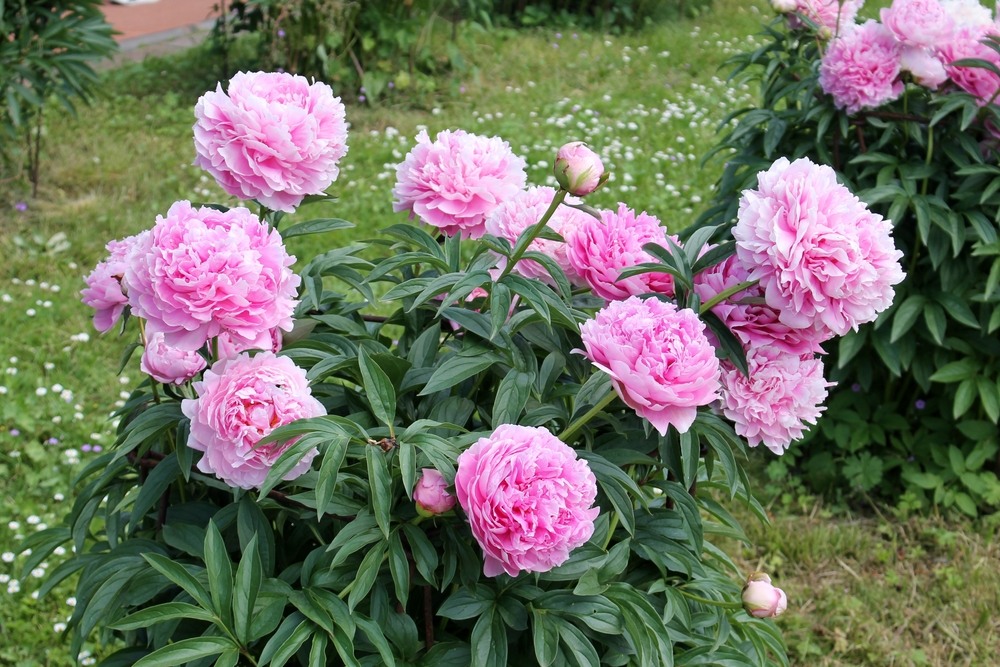
Again, the inaccuracies surrounding this topic are endless. Most individuals, pressing the panic button at the sight of ants, are quick to question, “Are ants damaging my precious blooms?”. I can affirm that this is certainly not the case.
Ants are not harmful to peonies. On the contrary, their presence fosters a beautiful example of biological mutualism. The peonies offer a bounty of nectar as food to the ants. In return, ants safeguard the peonies from other harmful insects such as aphids and thrips.
Hence, put away the insecticide, and embrace the magical interplay of nature happening right in your backyard. Remember, it’s all a part of the ingenious survival strategies of these species.
Managing Ant Populations on Peonies
Effectively addressing ant populations on peonies requires special techniques and precautionary measures. While ants generally pose no severe threat to peonies and even offer certain protective advantages, it’s sometimes necessary to control their numbers for aesthetic or practical reasons.
Preparing Peonies for Indoor Display
When cutting peonies for indoor display, it’s inevitable that some ants will tag along. However, you can minimize this issue by implementing a few techniques. First, shake the peony gently to dislodge any roaming ants. Following this, immerse the cut flower in water briefly. This agitation will encourage any remaining ants to abandon the bloom before you bring it indoors. Such measures ensure that you bring the floral beauty of peonies inside your home without the added company of ants.
Natural Ways to Deter Ants
There exist numerous harmless strategies for deterring ants from peonies if their presence becomes overwhelming.
Natural remedies prove to be effective alternatives to harsh chemicals and insecticides, with less risk to the environment and other non-target organisms.
Peppermint oil acts as an effective deterrent, as the strong aroma confuses ants and disrupts their pheromone trails, leading them astray.
Cayenne pepper and garlic also create an unfavorable environment for ants. Diluting apple cider vinegar with equal parts water and applying the mixture at the base of the plant can also help deter ants without harming the peony.
Use these strategies thoughtfully and with frequency, but remember that the core relationship between ants and peonies can be symbiotic, enhancing the overall health and beauty of your backyard ecosystem.
The Role of Peonies in Your Garden Ecosystem
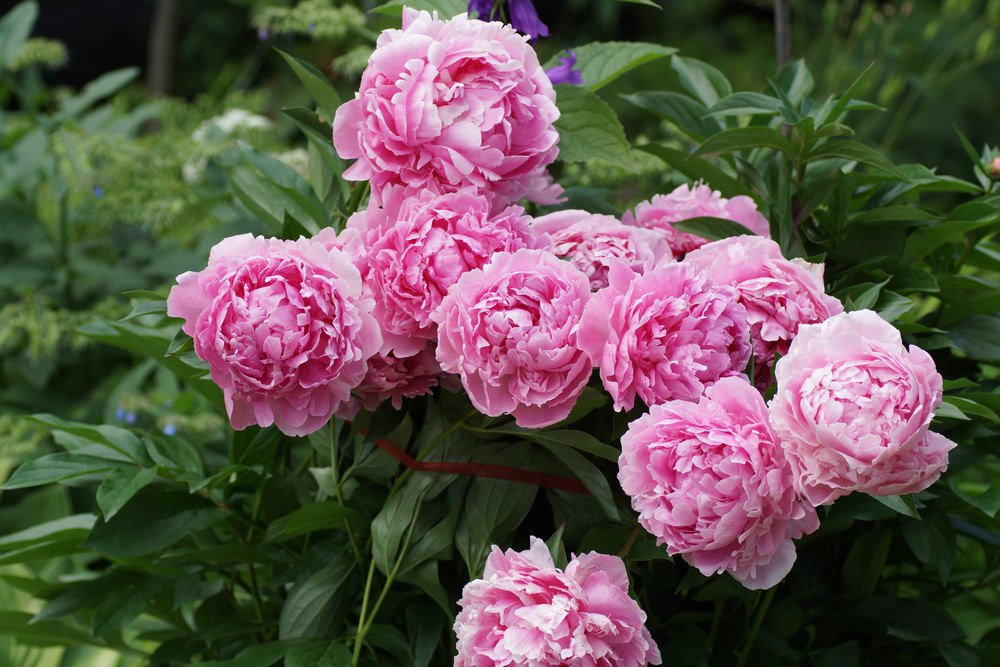
Peonies, ubiquitous across Asia, Southern Europe, and parts of Western North America, have quite a unique role in garden ecosystems. Aside from adding beauty and fragrance, peonies also feed beneficial insects and bolster the overall health of your garden, influencing a well-rounded eco balance.
Attracting Beneficial Insects
Peonies exude an irresistible allure to various insects, notably ants, due to their extrafloral nectaries seeping with sweet liquid, especially during the bud swell phase. Peonies’ green leaf-like structures, or sepals, cloak the flower bud and become coated in nectar. This draws in a medley of insects, primarily ants, attracted to this carbohydrate-rich sap.
However, ants don’t just take from peonies; they give back too. They actively defend their newfound food source, driving away other potentially damaging insects that feed on the peony. This action of ants helps preserve the flower elements from damage, providing an underscored guard service for the delicate blooms. Therefore, it’s apparent that peonies, through their sugary opiate, assemble a mini army of ants that discharge pest control duties, constructive for any garden setup.
Impact on Overall Garden Health
Emphasizing the symbiotic relationship peonies foster with ants demonstrates the plant’s influence on intact garden health. Peonies attract ants, which ward off detrimental insects, inadvertently promoting the well-being of not just the peony plant but also the garden at large.
The engagement of ants in protecting their food source reduces the chances of harmful pests affecting the garden ecosystem. In turn, this decreases the need for chemical insecticides, preserving the organic integrity of the garden.
In essence, peonies play a crucial role in attracting beneficial insects like ants, which can contribute to healthier, more vibrant gardens. So, if you spot ants marching to and from your peonies, don’t fret, they’re the hired protectors, supporting your gardening efforts and enhancing the overall garden health.
Conclusion
So, it’s clear that peonies and ants share a beneficial relationship. The ants are drawn to the peonies for their natural pest control abilities and in turn, they protect these stunning flowers.
While it’s not necessary for ants to be present for peonies to bloom, their role in keeping harmful pests at bay can’t be overlooked.
Managing the ant population on peonies can be a personal choice, but remember these tiny creatures contribute significantly to the health of our gardens.
When we allow peonies to attract ants, we’re fostering a healthier ecosystem in our backyards.
So next time you see ants on your peonies, appreciate the natural balance they’re helping to maintain. After all, vibrant gardens are the result of nature’s perfect harmony.





